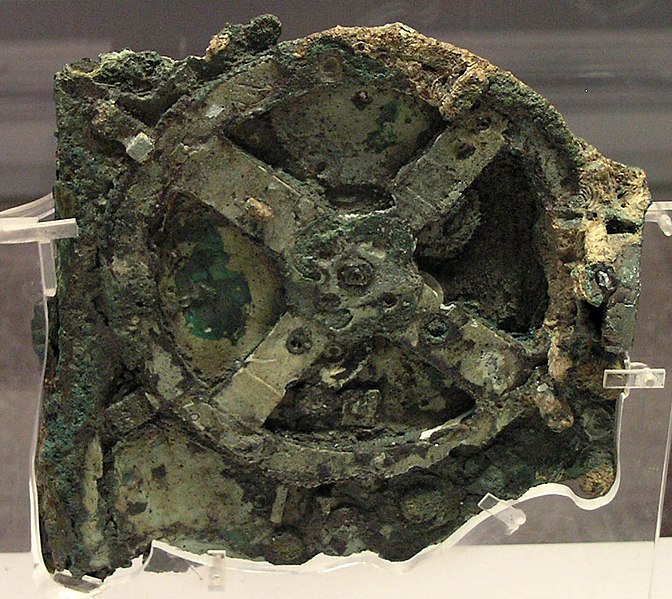A Conference organized by the Antikythera Mechanism Research Project with the cooperation of the National Bank of Greece Cultural Foundation...
More here.
Wednesday, 6 December 2006
Friday, 1 December 2006
International Herald Tribune: Ancient Greeks had a computer that is really 1.0
A computer in antiquity would seem to be an anachronism, like Athena ordering takeout on her cellphone.
But a century ago, pieces of a strange mechanism with bronze gears and dials were recovered from an ancient shipwreck off the coast of Greece. Historians of science concluded that this was an instrument from the second century B.C. that calculated and illustrated astronomical information, particularly phases of the moon and planetary motions...
Read whole article here.
But a century ago, pieces of a strange mechanism with bronze gears and dials were recovered from an ancient shipwreck off the coast of Greece. Historians of science concluded that this was an instrument from the second century B.C. that calculated and illustrated astronomical information, particularly phases of the moon and planetary motions...
Read whole article here.
Thursday, 30 November 2006
BBC: Ancient Moon 'computer' revisited
The delicate workings at the heart of a 2,000-year-old analogue computer have been revealed by scientists.
The Antikythera Mechanism, discovered more than 100 years ago in a Roman shipwreck, was used by ancient Greeks to display astronomical cycles.
Using advanced imaging techniques, an Anglo-Greek team probed the remaining fragments of the complex geared device...
Read full article here.
The Antikythera Mechanism, discovered more than 100 years ago in a Roman shipwreck, was used by ancient Greeks to display astronomical cycles.
Using advanced imaging techniques, an Anglo-Greek team probed the remaining fragments of the complex geared device...
Read full article here.
Nature: In search of lost time
The Guardian: Mysteries of computer from 65BC are solved
· Mechanism hailed as more valuable than Mona Lisa
· Device with gear wheels tracked sun and moon
A 2,000-year-old mechanical computer salvaged from a Roman shipwreck has astounded scientists who have finally unravelled the secrets of how the sophisticated device works.
The machine was lost among cargo in 65BC when the ship carrying it sank in 42m of water off the coast of the Greek island of Antikythera. By chance, in 1900, a sponge diver called Elias Stadiatos discovered the wreck and recovered statues and other artifacts from the site.
The machine first came to light when an archaeologist working on the recovered objects noticed that a lump of rock had a gear wheel embedded in it. Closer inspection of material brought up from the stricken ship subsequently revealed 80 pieces of gear wheels, dials, clock-like hands and a wooden and bronze casing bearing ancient Greek inscriptions.
Since its discovery, scientists have been trying to reconstruct the device, which is now known to be an astronomical calendar capable of tracking with remarkable precision the position of the sun, several heavenly bodies and the phases of the moon...
Read the full story here.
· Device with gear wheels tracked sun and moon
A 2,000-year-old mechanical computer salvaged from a Roman shipwreck has astounded scientists who have finally unravelled the secrets of how the sophisticated device works.
The machine was lost among cargo in 65BC when the ship carrying it sank in 42m of water off the coast of the Greek island of Antikythera. By chance, in 1900, a sponge diver called Elias Stadiatos discovered the wreck and recovered statues and other artifacts from the site.
The machine first came to light when an archaeologist working on the recovered objects noticed that a lump of rock had a gear wheel embedded in it. Closer inspection of material brought up from the stricken ship subsequently revealed 80 pieces of gear wheels, dials, clock-like hands and a wooden and bronze casing bearing ancient Greek inscriptions.
Since its discovery, scientists have been trying to reconstruct the device, which is now known to be an astronomical calendar capable of tracking with remarkable precision the position of the sun, several heavenly bodies and the phases of the moon...
Read the full story here.
First post
This blog will be covering whatever information is made public concerning the Antikythera Mechanism. People who feel that can contribute, please contact me.
Subscribe to:
Posts (Atom)
